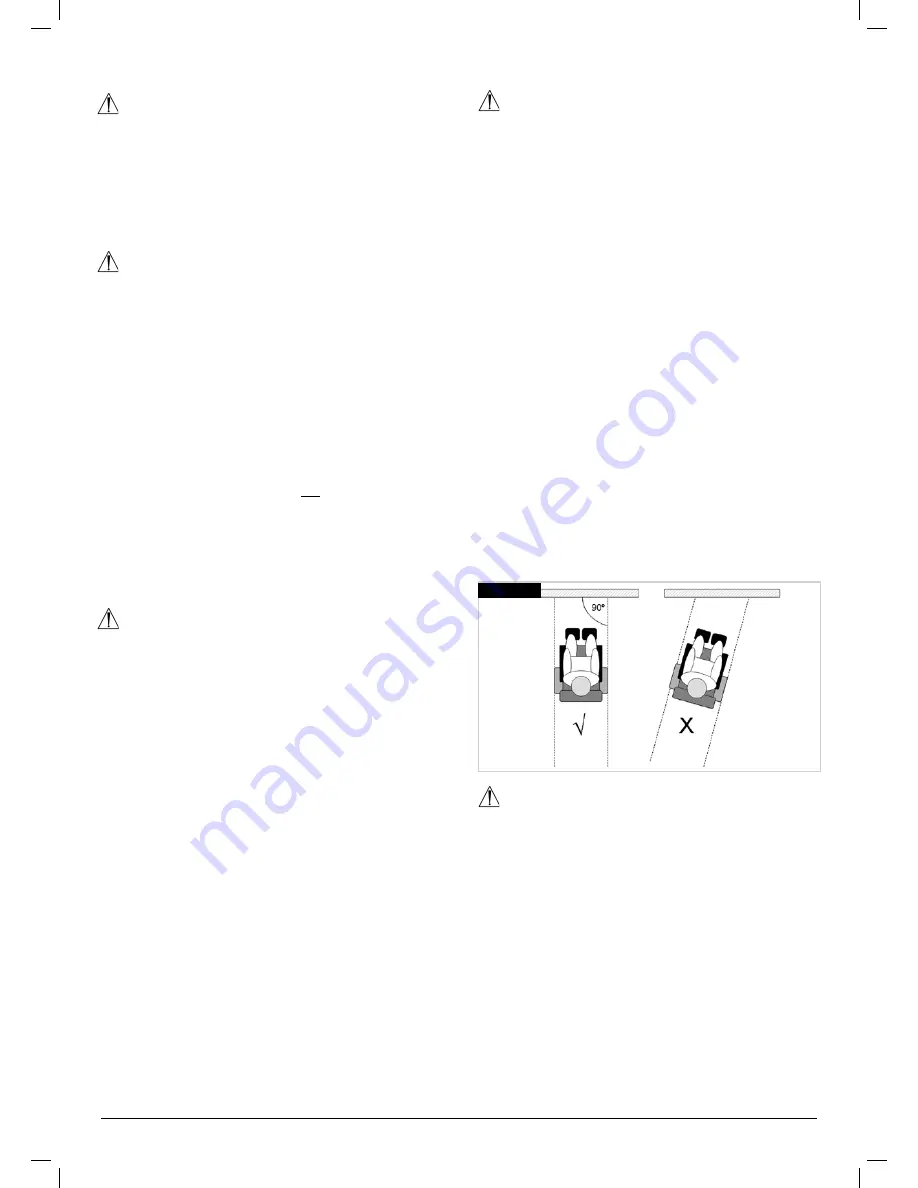
Quickie Jive
15
4.30 lights and indicators
warnIng!
Ensure that the lights and indicators are functioning
correctly and lens are clean before going outdoors at
night.
Lights assembly can become very hot - Care must be
taken if removing them for repair.
4.31 vent tray
warnIng!
Using a vent tray will affect the stability and overall
weight of your wheelchair.
Make sure that the batteries and the ventilator are
securely fastened to the tray before use.
Familiarise yourself with the increased size of the
wheelchair before driving to prevent potential collisons
When activating the recline backrest make sure that the
area around the vent tray is clear.
Be aware that the vent tray assembly can cause a finger
trap hazard when the backrest is reclined.
The vent tray is not designed to hold anything other than
the vent unit and its batteries, it is not designed to hold
an oxygen bottle etc. Use of these items may cause your
wheelchair to become unstable.
The vent tray must be installed and maintained by a
Sunrise Medical authorised dealer.
4.32 swing away tray
warnIng!
The maximum weight allowed for the tray is 2.5kg.
Do not overload the tray, this could cause the tray to
break or could cause the chair to become unstable.
Do not leave lit cigarettes or other heat sources on the
tray as this could cause the tray to deform and mark.
Ensure that all extremities and clothing are free when
positioning the tray for use.
4.33 using a kerb climber
warnIng!
Always approach a kerb at 90° (
Fig 4.3
).
Approach the kerb (step) head on driving forwards slowly
and steadily and always at a 90° angle.
RWD-Chair: As the kerb climber or castor makes contact
with the kerb (step), the wheelchair should be moving
slowly. Small kerbs can be climbed from a standstill.
FWD-Chair: Start accelerating the chair after a stop app.
20cm in front of the kerb to create enough speed/torque
to get the chair up. MWD-Chair: Stop the chair as soon
as the castor wheels touch the kerb.
RWD- and MWD-Chair: Apply sufficient power to the
motors to lift the front of the chair up onto the kerb (step)
and then apply slightly more power and speed so that the
drive wheels climb the kerb (step) smoothly and without
hesitation. As far as possible, keep the joystick in the
straight forward position. FWD-Chair: slow down the
acceleration as soon as the drive wheels are on the kerb
until the rear castor are up.
In accordance to the ground clearance, the maximum
obstacle height possible to climb is 5 cm for a RWD-
Chair (10 cm with kerb climber on a rear wheel drive
base,
Fig. 4.9, overleaf) and 10 cm for a FWD- and MWD
chair, when conducted as described above.
warnIng!
The approach speed and process can vary depending on
your wheelchair drive type and castor wheel choice.
Fig.4.3
















































